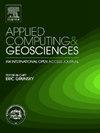An UNet3+ Network based on global pyramid aggregation for change detection in optical remote-sensing images
IF 3.2
Q2 COMPUTER SCIENCE, INTERDISCIPLINARY APPLICATIONS
引用次数: 0
Abstract
Change detection (CD) is a meaningful and challenging task for remote sensing (RS) image analysis. Deep learning (DL) based methods have shown great potential in change detection tasks, there are still two problems with existing deep learning methods such as CNN and Transformer: (1) They do not target different depths to extract global semantics in the network; (2) The increase in network depth will lead to uncertainty in the edge pixels of changing targets and the absence of small targets. First, to address this challenge and address these issues, this work proposes a global pyramid aggregation UNet3+ (GPA-UNet3+) change detection model, that uses UNet3+ as the backbone network and connects the encoder and decoder with a pyramid structure. Secondly, a Global Atrous Spatial Pooling Pyramid Module (GASPPM) is proposed. Refined features at different depths and aggregated them to enhance the network’s ability to extract global semantics. Finally, the Edge Enhancement Channel Attention Module (EECAM) is specifically proposed to alleviate the edge pixel uncertainty and spatial position information loss caused by the increase in network depth. Multiple experiments are conducted on two common change detection datasets and a real dataset. Extensive experimental results show that the proposed method outperforms other state-of-the-art methods, achieving the highest F1-score of 90.95%, 95.31%, and 88.32% on the LEVIR-CD dataset, SVCD dataset and Shizuishan Mining Area dataset, respectively.
基于全局金字塔聚集的UNet3+网络用于光学遥感图像变化检测
变化检测是遥感图像分析中一项有意义且具有挑战性的任务。基于深度学习(DL)的方法在变化检测任务中显示出巨大的潜力,但现有的深度学习方法(如CNN和Transformer)仍然存在两个问题:(1)它们没有针对不同的深度来提取网络中的全局语义;(2)网络深度的增加会导致变化目标边缘像素的不确定性和小目标的缺失。首先,为了应对这一挑战和解决这些问题,本工作提出了一个全球金字塔聚合UNet3+ (GPA-UNet3+)变化检测模型,该模型以UNet3+为骨干网络,并以金字塔结构连接编码器和解码器。其次,提出了一种全局属性空间池金字塔模块(GASPPM)。对不同深度的特征进行细化和聚合,增强网络提取全局语义的能力。最后,针对网络深度增加带来的边缘像素不确定性和空间位置信息丢失问题,提出了边缘增强通道注意模块(Edge Enhancement Channel Attention Module, EECAM)。在两个常用的变化检测数据集和一个真实数据集上进行了多次实验。大量实验结果表明,该方法在LEVIR-CD数据集、SVCD数据集和石嘴山矿区数据集上的f1得分最高,分别达到90.95%、95.31%和88.32%。
本文章由计算机程序翻译,如有差异,请以英文原文为准。
求助全文
约1分钟内获得全文
求助全文
来源期刊

Applied Computing and Geosciences
Computer Science-General Computer Science
CiteScore
5.50
自引率
0.00%
发文量
23
审稿时长
5 weeks
 求助内容:
求助内容: 应助结果提醒方式:
应助结果提醒方式:


